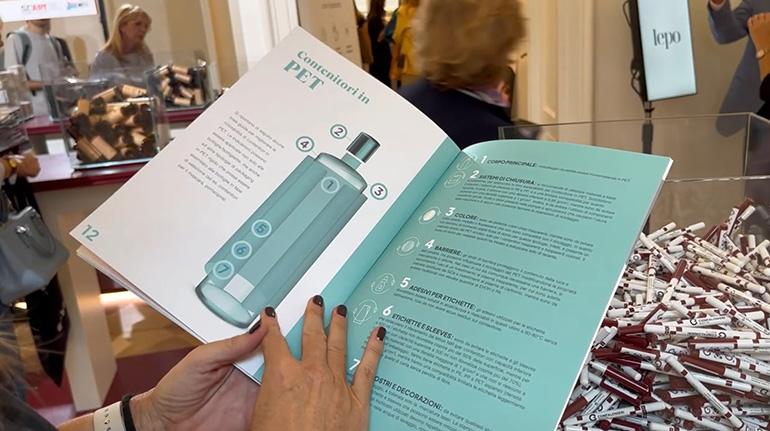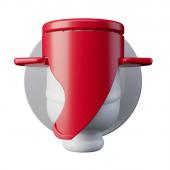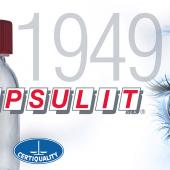Ecodesign of cosmetics packaging
Sustainable cosmetics packaging: the guidelines of Cosmetica Italia and Aliplast in a White Paper, drawn up to guide the sector towards packaging in fully recyclable and, if possible, recycled plastic.
An aesthetically refined but also recyclable packaging. Capable of enhancing the functionality of the product and, at the same time, useful for eliminating waste. While the packaging of cosmetic products struggled for a long time to hold together commercial and environmental objectives, today the principles of the circular economy guide much of the innovation in the beauty sector. The partnership between Cosmetica Italia – The National Association of cosmetic enterprises and Aliplast, European leader in recycled plastic, a Hera Group company, originates from this scenario.
The two organisations presented the “Imballaggi in plastica nel settore cosmetico” (Plastic packaging in the cosmetics sector) white paper during the second edition of Milan Beauty Week (26 September – 2 October 2023). It’s a practical guide to help companies in the sector to design fully recyclable plastic packaging, in line with the most recent regulatory guidelines of the European Union and with the sensitivity of a market which is increasingly attentive towards the environment and its resources.
Eco-design of plastic packaging: practical indications
In line with the indications of Recyclass and SPICE (Sustainable, Packaging Initiative for CosmEtics), European initiatives of plastic recyclers and the cosmetics industry, the document provides very important operating guidelines to orientate choices regarding the eco-design of polymer containers for cosmetics.
Make every plastic fully recyclable. Firstly, the paper briefly clarifies the processes for the collection, selection and recycling of plastic materials. It then goes into detail about the containers made with the different types of polymers HDPE/PP, PET, PE/PP: For each type, indications are provided on how to design every component of the packaging: main body, closure system, colour of the container, barrier layers, labelling, use of inks for decorations.
Avoid multilayers and attention to colours. The range of indications is very broad. Some apply to all materials. It is always advisable, for example, to design the main body in a single material, avoiding a multi-layer structure composed of a number of polymers, which makes recycling more difficult. Other indications are specific. With regards to HDPE or PP, all colours are acceptable except pigments not detectable by the readers of plastic sorting systems, such as carbon black. In all events, it is always preferable to use light colours for the container because this makes it easier to use once transformed into recycled plastic. For PET packaging closure systems, it is advisable to use polyolefin-based materials, to ensure that they are separable from the PET container. In addition, it is recommended to avoid using metallic components (such as springs or bearings in pumps or sprayers) which cause wearing of the machines and in some cases can block the recycling operations. These, however, are only some of the detailed guidelines contained in the paper.
Dedicated collections for smaller packages. The White Paper also deals with the dimensions of the containers. Today, in fact, especially in packaging for make-up, although they conform to design regulations for recycling, most containers are excluded from the classic recycling process because they are too small to be intercepted by the sifters and ballistic separators of selection machines. For these containers, therefore, dedicated collections could be envisaged at the points of sale, if possible, leaving the cap attached to the package.
Impact reduced by two thirds using recycled plastic. Another focus is, instead, on the use of recycled plastic for making packaging, which can bring significant environmental advantages in terms of the saving of resources and decarbonization. The document, for example, cites a Life Cycle Assessment (LCA) study by Aliplast which conforms how a granule of PET from virgin material has an impact on CO2 emissions about three times as much as the same granule deriving from recycled PET (3.04 kg against 1.25 kg of CO2 equivalent).
It’s an environmental benefit which, if communicated to the consumer in a transparent way, can add real value to the product.

Together to create culture and spread knowledge
- As Carlo Andriolo, CEO of Aliplast has affirmed: «The White Paper drawn up together with Cosmetica Italia is an opportunity for the entire beauty supply chain, which is evolving strongly towards increasingly circular products attentive to the use of resources. It’s not, however, the first time that Aliplast has offered its know-how to this strategic Made in Italy market. We have worked for some time with various business in the sector to develop innovative recycled plastic packaging solutions, also thanks to the Aliplast Lab, in which we co-design products with our customers that are on a par with virgin-material products for their aesthetics and technical characteristics».
- «Sustainability is a priority and, at the same time, a responsibility for our sector» comments Benedetto Lavino, Cosmetica Italia president. «It’s a topic, in fact, which is strictly linked to innovation (in which the cosmetics industry invests 6% of its turnover each year) and to industrial development. Attention to the environment is an aspect about which we are called upon to act, both as individuals and to respond to an increasingly deep-rooted awareness in the consumer. Companies have undertaken numerous initiatives, but the role of the Association is also fundamentally important to favour the dissemination among its member businesses, of a culture and knowledge about the issues linked to sustainable development. Specifically, the white paper drawn up with Aliplast allows us to reason with a supply chain approach that is decisive and strategic in addressing the different facets and challenges of sustainability».




















